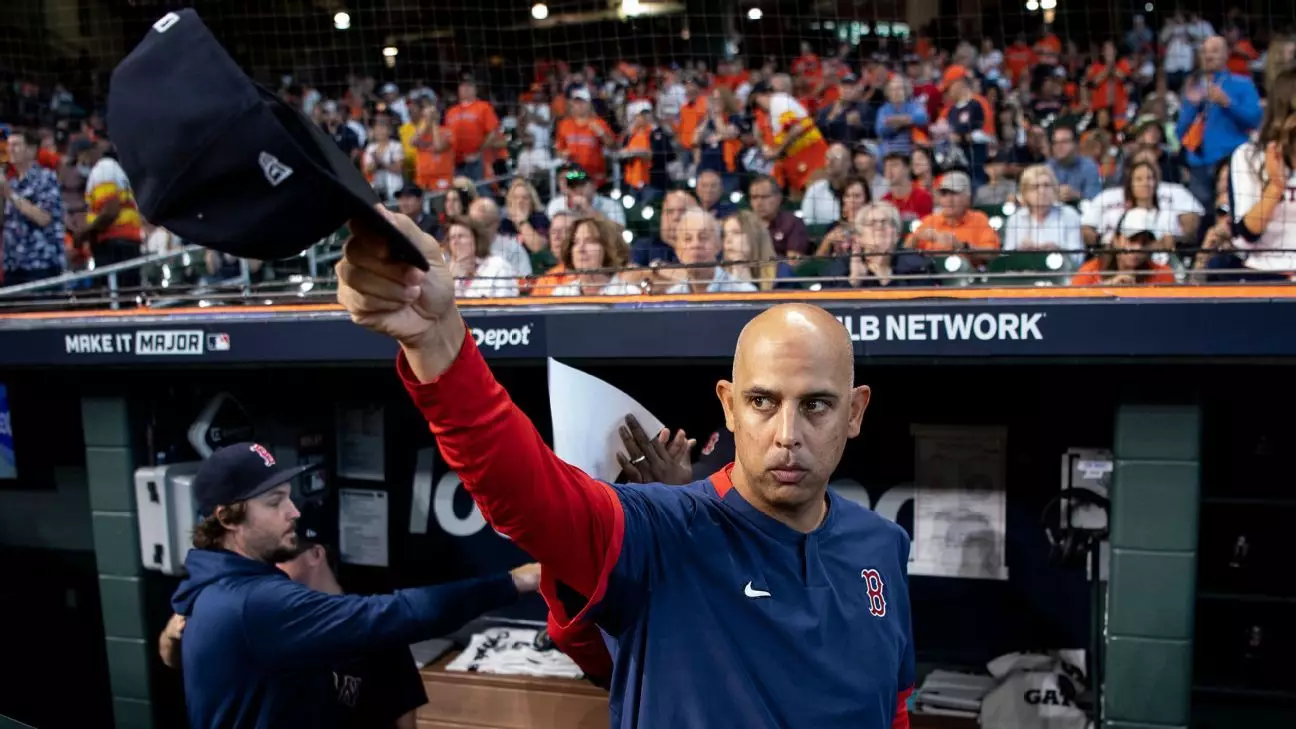Alex Cora, the manager of the Boston Red Sox, might not have become a soccer aficionado until his first visit to Anfield in 2019, but his newfound admiration offers a compelling perspective on the trials athletes face across both baseball and soccer. Cora’s point about the staggering implications of competing for league standings—where finishing fourth can still signify a ‘successful’ season by qualifying for the Champions League—highlights an intricate web of competition that defines European football. This contrasts sharply with the single-minded pursuit of the World Series that characterizes baseball’s culture.
Cora’s epiphany occurred in the context of a sports culture deeply enmeshed in endless battles for relevance. The frenetic pace of soccer, with its multitude of matches that shape careers and club histories within a calendar year, reflects a chronic over-scheduling that athletes, yet again, are forced to navigate. There is something both awe-inspiring and jarring about the breadth of their struggle. Players—touted as some of the world’s best—find themselves in an exhausting cycle that begs for questions of sustainability, recovery, and the larger implications on their careers and health.
The Upcoming Season: An Unprecedented Challenge
The 2024-2025 soccer season has been labeled as the longest yet, exacerbated by FIFA’s decision to hold an expanded Club World Cup in the United States. Featuring 32 teams and a frustratingly crowded schedule, this year is already shaping up to be a weighty burden for the committed players vying for glory. In contrast, while baseball’s 162-game grind is daunting, it is arguably more methodical, providing rhythms and breaks that soccer’s calendar lacks. The MLB season is dotted with All-Star breaks and a clear postseason structure that allows players a semblance of time to recuperate.
In soccer, however, the narrative is different. The likes of Rodri and Kylian Mbappé have voiced their frustrations, pointing to the relentless barrage of fixtures that can lead to injuries. This season has shown injury rates skyrocketing, as clubs like Arsenal and Real Madrid grapple with player unavailability, showcasing the fragile balance between competition excellence and athlete welfare. Cora’s discussion with Liverpool’s Virgil van Dijk poignantly underlines this tension; despite their shared understanding of tough seasons, the stark differences in their sports reveal deeper issues embedded within each league’s scheduling philosophies.
A Fragile Competitive Landscape
The competition in soccer intensifies not just geographically but contextually. A player’s performance impacts not merely their statistics but also the overall dynamics of league standings, national pride, and economic implications for clubs. Cora’s conversations reflected this idea when he admired the tireless efforts soccer players must undertake. With ample tournaments in short intervals—including cups, league play, and international duties—soccer’s structural demands appear to grind down player vitality to its very limits.
On the flip side, the MLB may hold fewer games, yet its players still contend with physical strain and intensity. Rarely do we see such pressures translate to widespread injuries in baseball as they do in soccer, where the sheer volume of matches, compounded by extensive travel and international commitments, often culminates in hampering performances on the pitch.
Moreover, the issue of recovery time is paramount. Managers like Hansi Flick have openly criticized the lack of adequate rest following international breaks, calling for a reassessment of scheduling protocols to protect players. Herein lies a crucial tension: should the governing bodies prioritize player health or commercial interests? Flick’s assertions raise awareness of the need for comprehensive discussions that balance competitiveness with the well-being of athletes.
The Broader Implications for Global Football
FIFA’s assertion that European leagues are acting with “commercial self-interest” reflects a troubling reality of the sport today. In a world increasingly driven by monetization and TV revenues, players face an exhaustive expectation—an endless calendar filled with matches that serve to satisfy financial appetites rather than prioritize athlete welfare. The distinction is clear; the integrity of the sport is not just at stake but the sustainability of its athletes as well.
As more players embark on tours that can last weeks and involve traversing the globe for friendlies, the implications on their physical and mental health cannot be overstated. The Executive Committee’s decisions often disregard the ask of recovery, compressing schedules to fit an agenda that jeopardizes player performance and safety. The Club World Cup’s format introduced this year—expectedly brutal—is but one example of this growing dissonance between commercial priorities and the human aspect of sports.
The stakes may be high in soccer, yet unless the landscape shifts towards a model that respects the rhythm of recovery and the necessity for recuperation, we may witness athletes burn out prematurely, leading to cascading effects on the integrity of competition itself. As we assess the implications of fixture congestion today, the hope for a reimagining of global sporting structures has never been more essential.

Leave a Reply